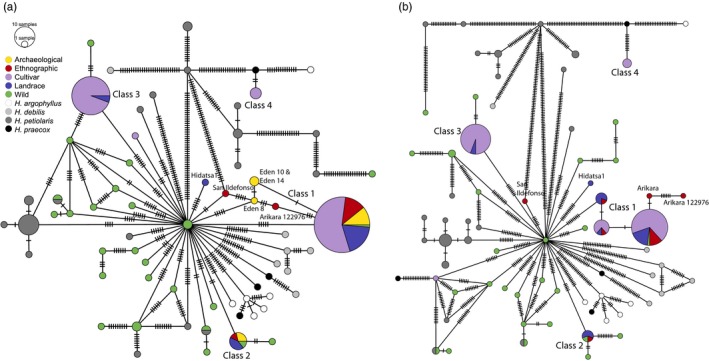Figure 3.

Plastome haplotype networks constructed with wild, cultivated, landrace, ethnographic, and archaeological sunflowers (a), and plastome haplotype network constructed without the archaeological sunflowers (b). The size of the circles corresponds to number of individuals present, and the number of polymorphic sites between individual haplotypes is indicated by tick marks. Haplotype classes for each sample are included in Table S3. Class 1 is a core domestication haplotype and is composed of wild Helianthus annuus, archaeological specimens, ethnographic samples, extant landraces, and modern cultivars. Class 2 also represents a haplotype that entered the domestication process thousands of years ago; however, it is not observed in cultivars. Class 3 consists of R‐type elite cultivars used in hybrid breeding, and was presumably introduced into domesticated germplasm from H. petiolaris in the 20th century; as discussed in the text, we suspect two Mexican landraces in Class 3 may originate from misidentified cultivars. Class 4 consists exclusively of elite cultivars, and was likely introduced from crop wild relatives, putatively H. argophyllus, during recent breeding for resistance to pathogens and diseases
